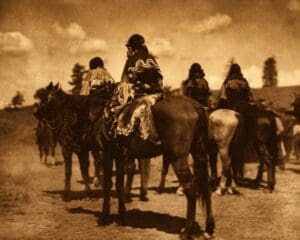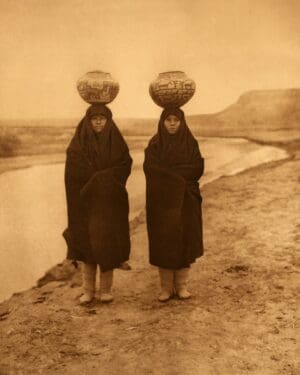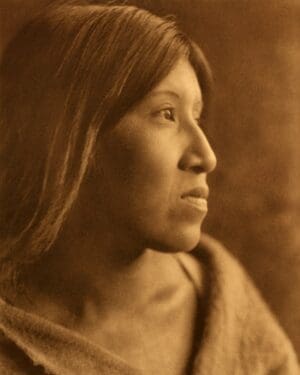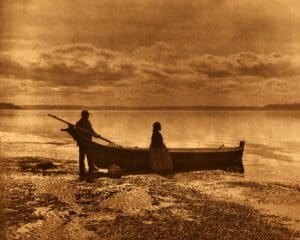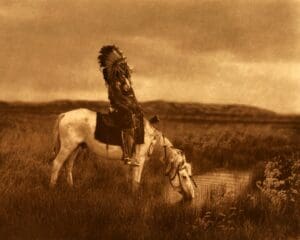Jicarilla Native Americans
Jicarilla Indian Photos by Edward S. Curtis
Tribal Summary
Dress
The Jicarilla Indians in dress show the effect of their contact with the Plains tribes, especially the Ute. The primitive dress of the men was a deerskin shirt with sleeves, hip-leggings and moccasins, and the universal loin-cloth. In winter a large loose deerskin coat was worn in addition.
The women wore a waist open at the sides under the arms, a deerskin skirt falling below the knees, and legging-moccasins with very high tops. About the waist the women now also wear a very broad leather belt, ten to sixteen inches in width, extending well up under the arms. The men wear their hair in braids hanging over the shoulders and wound with strips of deerskin. Formerly they wore bangs in front on a line with the cheek-bones and tied their hair in a knot at the back of the head, as the Navaho and the Pueblo Indians do. The women part their hair down the middle, bring it to the sides of the head, and tie it with strips of deerskin, cloth, or yarn.
Dwellings
The Jicarilla dwelling is the same as the tipi of the Plains Indians, once made of five buffalo skins on the usual framework of poles, with smoke-hole at the apex. Since the disappearance of the buffalo, canvas has replaced the skins, and many log houses are also to be found on the reservation. The native house is called kozhan.
Food
The Jicarillas obtain corn from Rio Grande Pueblos in exchange for baskets; but formerly they subsisted mainly by the chase, killing buffalo, deer, antelope, and mountain sheep, besides many kinds of small game and birds. Pinon nuts and acorns, with various wild fruits and berries, were used. Bear and fish were never eaten.
Showing the single result

